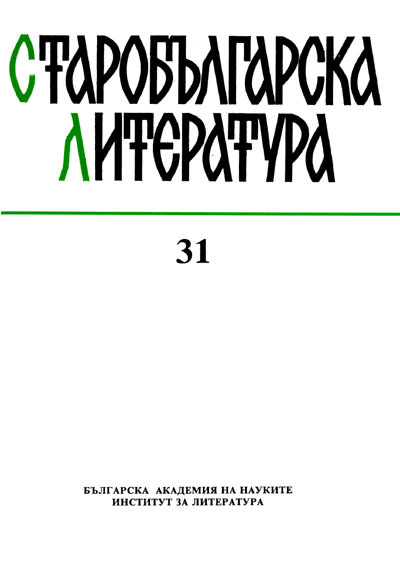

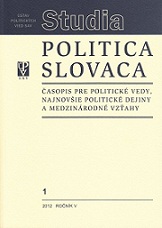
Keywords: papal charter; liturgical language of the Slavs; East Frankish clergy; Tri-linguals; Council; Western Christian universe; political influence; the Latins; the Apostolic See; the policy of conflicting interests; obedience; pragmatic politics
The study is a follow-up to Part I, on the political importance of the mission activity of Constantine and Methodius in the Slovene territory until the year 868, published in Studia Politica Slovaca Issue 1/2012, vol. V. In this section the author attempts to describe the efforts of Constantine and Methodius to gain approval of the Apostolic See to use the Slovenian language in church liturgy and to create a separate church organization in Great Moravia. It puts the efforts of the Thessalonian brethren in the political context of the struggle of Great Moravian rulers led by Dukes Rastislaus and Swatopluk (Swentopolk, Zwentibald) for the establishment of Slovenian statehood. On the basis of prominent historical documents (especially papal documents: Gloria in excelsis, issued by Pope Hadrian II in 869, and Industriae tuae, issued by Pope John VIII in 880), as well as other important historical documents, it attempts to give a political context to these significant events in the history of the Slovak nation, especially in terms of building the foundations of statehood of our Slovenian ancestors. It also seeks to define the role of Constantine (up to 869) and his brother Methodius (up to 880) in the evolution of Slovak political thought as well as in the formation of Cyril and Methodius tradition, which made a remarkable contribution to our idea of statehood. Even in those times the culture and statehood of Slovenians (and other Slavs) living in this geographical area were to a great extent influenced by the political and cultural effects of the mission activity of Constantine and Methodius. In our modern national history it became not only an ideological source of our statehood, but also a part of the preamble of the Constitution of the Slovak Republic.
More...Keywords: cercei; cronologie; decor; podoabe; teritoriul României; spatiu balcanic; tipologie
This study proposes a grouping of earrings decorated with curled wire, that were discovered on the actual territory of Romania, a typology and chronology of them. An overview of the issue for the countries from Central Europe and of south-east was presented at the beginning. There follows a repertoire of discoveries from Romania, organized on types of sites (necropolises, settlements and discoveries of unstated type). The type of discoveries has been analysed, as well as the manufacturing materials, execution techniques (for lock-rings, rods and decor). Type I is represented by pieces from Alba Iulia-Statia de salvare, Coconi-Caldarea, Craiova-Fântâna Obedeanu, Dridu-La Metereze, Nufarul-La Piatra, Pacuiul lui Soare and Portaresti-Cetatuie; Pl.1/1-5, 8, 14, 15-18. This had probably the widest spread, being encountered in Korbovo, Bizeljske, Pilin, etc. Typology of pieces from Romania Type Ia (Suceava, Trifesti; Pl.1/19, 21). The piece from Suceava was discovered probably in the same context with another earring decorated with a round setting from silver wire. Similar pieces were discovered in Wallachia in the necropolis from Vadul Anei, being dated throughout the XVIth century. Unfortunately the stratigraphic context and chronology are not very evident for this piece. The piece from the second locality dates from the XIIIth-XIVth centuries. Type Ib (Trifesti; Pl. 1/20). At the moment we do not dispose of definite analogies for this piece, but on the base of general dating of the necropolis it may be dated similarly with the previous piece that came from the same locality. Type II (Craiova-Fântâna Obedeanu; Pl. 1/6-7) has analogies in discoveries from Macedonia, from Prilep, Kocani or from Serbia, in Ribnica. In this last locality, a sheet pendant was additionally added in the lower part of the rod. Type III (Isaccea; Pl.1/10-11) consists, in fact, of the pendants of some earrings. Similar pendants were also discovered only in Niš and Kocani. Pieces from Mâlesti and Hudum-Dealul Hudumului, necropolis 2 cannot be framed within a certain type or variant, they not being whole pieces. In the same situation are pieces from Bornis, Cetateni-Muscel and Cetatea Neamtului, which were not published with illustration or depiction.
More...Die Diözese von Ludrum wurde an der zweiten Kirchenversammlung in Salona (533) gegründet, der der Erzbischof von Salona Honorius Iunior (528- 547) präsidierte. Für ihren Sitz wurde Ludrum gewählt. Die Lage dieses Ortes ist noch immer unbekannt. Dieser Diözese wurden dabei auch Magnoticum / Magnioticum, Equitinum, Saluiaticum und Sarsiaticum angeschlossen. Es bleibt aber unklar, wann und in welchen Umständen sie erlosch. Viele Autoren haben versucht, sie, bzw. Ludrum zu lokalisieren. In der Historiographie herrscht vorwiegend die Meinung von Vjekoslav Klaić (1849-1928), dass Ludrum im Ort Biskupija bei Knin (Kroatien) zu suchen ist, wobei die Diözese von Knin die Nachfolgerin der Diözese von Ludrum war.
More...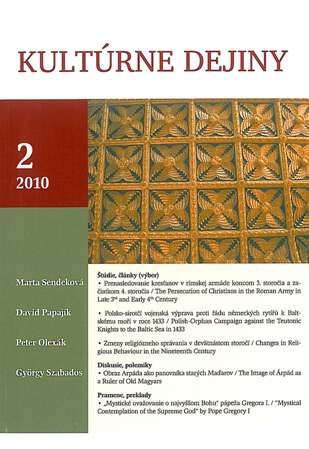
Keywords: Carpathian Basin; Hungary; 10th Century; Princ Árpád; Battle of Bratislava 907; Old Magyars
In 907 two important events of the medieval Central European history happened. The monarch of the Hungarians Árpád died and the army of the East Frankish kingdom was defeated at Bratislava on July 4th and 5th. Although both of these events are the chapters of the Hungarian Conquest, there is no direct connection between Árpád’s passing and the battle. At first the data bases are absolutely different: Árpád’s last year was mentioned only by Gesta Hungarorum (The Deeds of the Hungarians) written by the anonymous notary of king Béla III. However, this author did not give an exact date within the year 907. Moreover the memory of the battle of Bratislava had not been saved in Hungarian chronicles, only external sources tell the fact of the fight. My study gives a review on the background of the double actuality of 907. There are several seriously discussed points of the Hungarian Conquest. One of them refers to the introductory events: who was the first Hungarian monarch? Árpád or his father Álmos? The home tradition declares Álmos, on contrary Emperor Constantine VII asserts Árpád to be the first ruler of the Hungarians in their earlier territory called Etelköz. After an almost 250 years old discussion we can be sure that the home mem-ory was right. Álmos established a heathen Hungarian state in Etelköz and Árpád led the people into the Carpathian Basin. There are two opposite opinions in the written sources on the circumstances: some of them regard the immigration as a victorious conquest, some of them tell that it was a runaway after a massive defeat. The decision is in the military history: the Hungarian fighting activity was so strong at the turn of the 10th century that the theory of the runaway can be denied. Many raids and victories are mentioned in the external sources before and after 907, and within this process the battle of Bratislava is an important focusing point. The last part of this paper deals with the development of Árpád’s image. The ancient chronicles do not tell us much about his deeds. The anonymous notary re-interpreted his figure according to the spirit of chivalry. As his Gesta Hungarorum had been discovered and published in 1746, it strongly influenced the historical thinking. His imaginary Árpád suited the awakening national romanticism, therefore a new hero was born in the epic poetry in 1825.
More...Keywords: apă; votiv; ofrandă; Rin; Dunăre.
Roman era objects found in water are less numerous than finds from other epochs. In many cases the motive for their presence is unknown and hard to interpret. Some of them certainly are or should be interpreted as votive offerings. Other finds reached the water because of the bridge or shoal crossing, battles fought near rivers, erosion or belonged to some lost ship cargoes. Military items, especially swords, daggers, helmets and shiels were recovered near roman army centres. The next category of finds is formed by bronze vessels of all types, together with ceramic and other iron objects (especially tools). Also hoards with silver and gold items were recovered and, sometimes, coins in large quantities.
More...Keywords: student; Turda; Universitate; Cracovia; Wittenberg
The content of this article falls in with cultural history and contains a presentation of students from Turda. Turda was a center of some importance in Transylvania during Middle Ages and pre-Modern era. This was reflected in the number of students from Turda at the major European universities. The first student from Turda was recorded in 1412 at the University of Vienna, Johannes Gregorii Zompol de Torda. Most of the students from Turda chose the University of Kraków, as this town was closest to their hometown. The evolution of the student population from Turda is found in two distinct phases: the first period is from 1412 until 1539 when 42 students enrolled mostly at the University of Kraków and the second period spans from 1555 until 1700 when the number of these students decreased to ten, four of whom chose the University of Wittenberg. This situation was a result of cultural isolation of Transylvania after the Battle of Mohács. On the other hand, through its students, Turda was connected with the European ideas of the time, the Medieval Scholasticism or the new ideas promoted by the Protestant Reformation. Of all the students from Turda, only thirteen were able to obtain the first academic degree artium baccalaureus and one of them was awarded a doctorate degree at the University of Padua. This person was a monk, Thomas de Torda and he became a professor at that university. This fact was unique in the history of Turda. Unfortunately, there is still a great lack of data about the students from Turda, mainly their subsequent career. Generally, it is known that they pursued the ecclesiastical career; a former student at Wittenberg became the second reformed bishop of Transylvania.
More...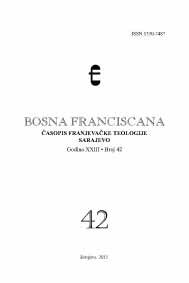
U radu se pristupa analizi povijesnih predaja inkorporiranih u romane morlačke tetralogije Ivana Aralice. Predaje se navode i interpretiraju kronološkim redom u skladu s redoslijedom kojim su romani objavljeni. Rad je usmjeren na raznolikost motivskog svijeta odabranih predaja i cilj mu je prikazati raznolikost i širinu motiva koje je Ivan Aralica uvrstio u svoje romane koristeći povijesne predaje. Predaje se kompariraju s historiografskom i drugom literaturom koja tematski obuhvaća iste pojave. U radu je naglasak stavljen i na hibridnost povijesnih predaja koje često imaju značajke i drugih usmenoknjiževnih oblika, posebice legendi.
More...Keywords: Anxiety; social phobia; hiding one’s true self; positive emotions; interaction; friendship relations
Social anxiety often causes different problems in human communication. The aim of this paper is to examine mutual relations between social anxiety, the need to hide one’s true self, cognition via positive emotional experience, and thequality ofadolescents’ close relationships. The appropriate sample consists of 152 secondary school students of both gendersfrom Valjevo(75 male seniors and 77 female seniors), aged 18.6 on average. The following measuring instruments were used in the research: Social Interaction Anxiety Scale, Social Phobia Scale, Positive and Negative Affect Scale, questionnaire onbeliefs about the need to hide one’s true self, and Friendship Quality Questionnaire. Descriptive indicators and internal consistency are satisfactory and similar to the ones in other validation studies. Correlation and hierarchy regression analysis was used to statistically process the results, whereby friendship quality was the criterion variable, whereas other variables were predictors. Result analysis shows that the need to hide one’s true self and the perception of pleasant emotions are beyond the control of gender and both types of social fears, and that they are relevant and characteristic predictors of adolescent friendship quality. Gender was extracted as a statistically important partial predictor in every step of the linear regression model, whereas theinteraction effect ofvariables of gender and both types of social fearsis not significant for criterion prediction. However, an important part of the friendship quality criterion variance remained unexplained, so it is recommended that some other variables should be examined as potential predictors amongadolescents. The results obtained in this study are completely in accordance with the results of previous studies. Furthermore, these results are significant for the theoretical understanding of self-discovery and development of close relationships; they also have a practical significance for socially anxious adolescents whoare prone to hiding their true self.
More...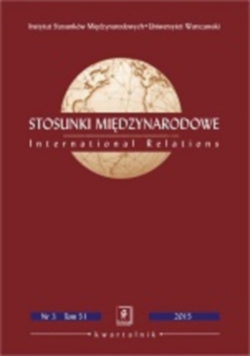
Keywords: Responsibility to Protect; prevention of mass atrocities; preventive instruments; United Nations; human rights
The article deals with the prevention aspect of the concept of Responsibility to Protect. The analysis performed by the author covers the most important R2P documents. The author presents the intergovernmental debate that took place mainly at the UN General Assembly, as well as the evolution of the approach of the UN institutions to R2P and the growing acceptance of the development of the prevention aspect. The article systematises and analyses the international instruments of prevention of mass atrocities: early warning, preventive diplomacy, economic and military instruments. Moreover, it identifies the main difficulties experienced by countriesand international organisations that have decided to take action towards preventing mass atrocities.
More...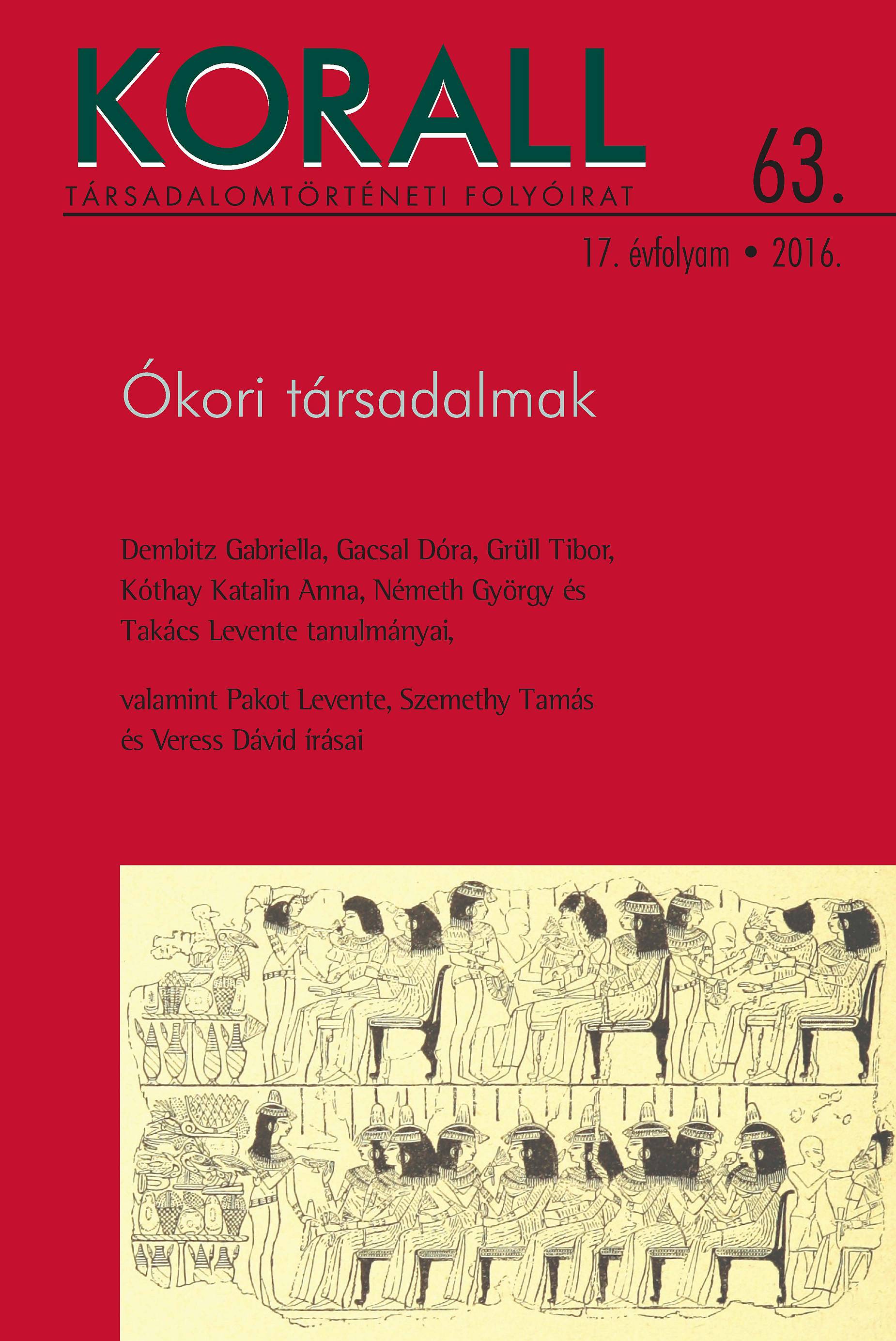
Keywords: history;history of religions;
More...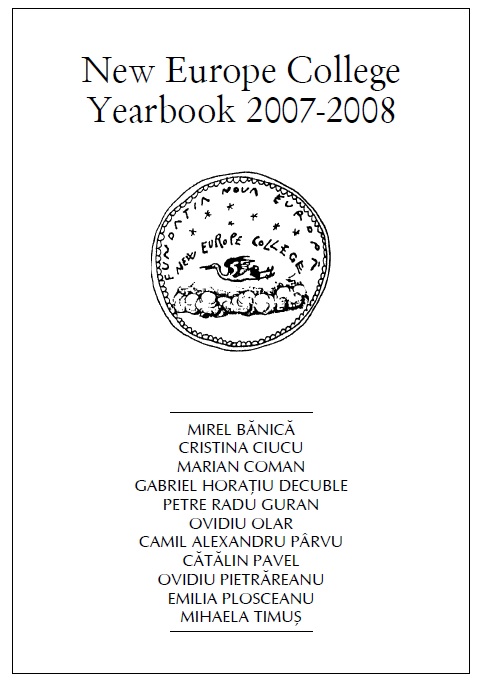
Keywords: grave;Sarmatians;mug;jug;skull;
The grave from Călăraşi was published in 1952 as an analogy for a tomb found in Moldavia, but it was followed neither by a discussion or a detailed description of the grave-goods, nor by photos or drawings. According to the few data published, the inhumation grave, accidentally found in 1948 (in the site called Aeroport) belongs to a woman with deformed skull. The grave-goods consist in a mug, a jug , few beads and a mirror. Unfortunately, we could recover only the skull and the two vessels (mug and jug, both made of grey fabric, with polished ornament). The grave can be dated in the 3 rd century AD, based on the analogies for the two vessels, and on the polyhedrical beads found. A more precise chronology is not possible, at least in the present stage of research. According to the anthropological diagnosis, the skull belongs to a women, rather of mature age.
More...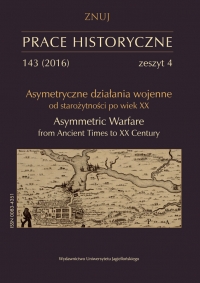
Keywords: konflikty asymetryczne; późny antyk; Afryka Północna; Justynian; Maurowie
The series of wars against Moors in North Africa, which took place after capturing these provinces by Justinian’s army in AD 533, is sometimes compared by historians to modern asymmetric conflicts. The present paper is an attempt at a closer look at both the military aspect of the mentioned conflict and its political determinants, in order to answer the question of whether present-day asymmetric conflicts can in fact be regarded as a an accurate key for its description. The answer is not unambiguous. On the one hand, what we find here is asymmetry on many levels, exerting heavy influence on the character of this particular war. On the other hand, the conflict can be seen as part of a centuries-long history of complex interaction between the Roman state and ‘Moorish’ political organisms in the region, thus it is impossible here to speak of any ‘strategic surprise’ characteristic of modern conflicts of this type. Neither of the parties had in mind to destroy the opponent or to dislodge it from the disputed area; in fact, the Moorish Wars with Rome could rather be regarded as specific, rather violent negotiations of terms and conditions for a peaceful coexistence of two very different political organisms.
More...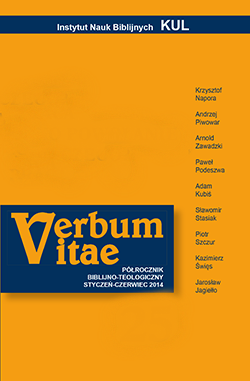
Keywords: martyr; witness; testimony; martyrdom; Acts of Martyrs; passio; acta martyrum
The article explores the phenomenon of Christian testimony present in experiences of persecution and in the death of martyrs, those who have given their lives for Christ. The primary sources for our reflection are the preserved descriptions of martyrdom (passio, acta martyrum). Martyrdom is commonly considered as the highest form of Christian testimony, thus it is useful to examine how it is present in the direct testimonies of the passion and death of the Christians of the first centuries, in that period of persecutions when indeed the theology of martyrdom first awakened and the witness of a Christian’s life and death took on particular importance. The article discusses the issue of testimony from different points of view: the witness of written testimonies, the testimony of the earthly lives of the martyrs, the testimony of their faith, and testimony of the act of martyrdom itself.
More...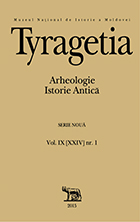
Keywords: Byzantine Empire; Second Bulgarian Tsardom; Ionitsa Asen
In 1197 Ionitsa (Kaloyan) Asen came to the throne of the Second Bulgarian (or the Vlach-Bulgarian) Tsardom. Having ascended to the throne, he inherited strained relations with the Byzantine Empire. During the first two years of reign the new tsar did not engage in military actions against Byzantium. In this period of time he consolidated his internal positions, strengthened the relations with the Cumans and had made alliances with two other Vlach rulers, Dobromir Chrysos from Macedonia and Ivanko from Thrace, who rebelled against Byzantium. Around 1199 Ionitsa Asen resumed the war with the Empire, opposing her possessions in the north-west of the Balkan Peninsula, the Middle Danube and northern Macedonia. During these campaigns the Vlach-Bulgarian sovereign attached to his possessions lands lying between Vidin and Belgrade. Along with the resumption of hostilities against Byzantium in the north-west of the Balkan Peninsula, the allies of the ruler of Tarnovo – the Vlachs and the Cumans from Northern Danube attacked the Byzantine possessions in Thrace. Between 1199 and 1200/1201 they attacked this region for several times. In the spring of 1201 Ionitsa Asen started his own military campaign against Byzantine possessions in Thrace, during which he conquered the strongholds of Konstanteia and Varna. In March-April 1201 he signed a peace treaty with the Emperor Alexios III Angelos. Under this treaty, both sides defined the boundaries of their possessions. The treaty did not normalize relations between Tarnovo and Constantinople and they continued to be strained. Both sides violated it on various occasions.
More...
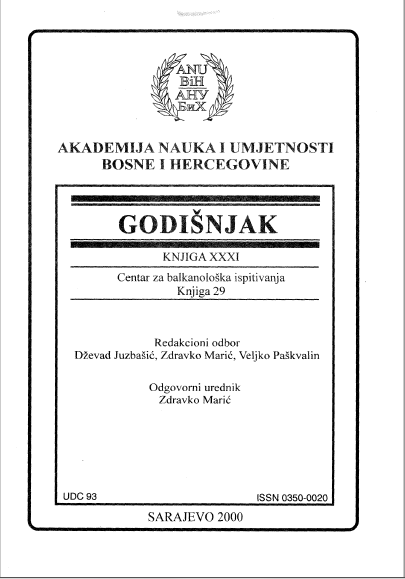
Keywords: Dalmatia; Miner provinces; Roman history;
Dalmatien, das bis zum Jahre 8/9 n. Chr. Teil der Provinz lllyricum - einschließlich Pannonien war, war an verschiedenartigen Bodenschätzen reich, die mit kleineren oder größeren Unterbrechungen schon seit dem Eneolithicum gefördert wurden. Die Bodenschätze waren neben den strategischen einer der Hauptgründe für die Eroberung der dalmatinischpannonischen Gebiete durch die Römer. Die Bodenschätze des näheren und weiteren ostadriatischen Hinterlandes zogen bereits seit dem 7. und 6. Jh v. Chr. hellenistische, umbrische und etruskische Kaufleute an, die vor allem an Gold und Silber interessiert waren. Das Silber, das vorwiegend in Verbindung mit Zink, Blei, Quarz und Pyrit gefunden wurde, wurde in beträchtlichen Mengen bereits seit dem Ende des 5. Jhs. v. Chr. ausgeführt. Im Laufe des 4. Jhs. v. Chr. erschienen in den ägeischen Gebieten größere Mengen Silbermünzen und Schmuck. Für ihre Herstellung wurde zum großen Teil auch dalmatinisches Silber benötigt. Die Macht der balkanischen politischen Organisationen, an deren Spitze die Herrscher Bardylis, Monounios, Mytilos, Genthios und Ballaios standen, gründete sich großenteils auf dem Reichtum der dalmatinischen Edelmetallbergwerke. Das Silber von den dalmatinischen Gebieten wurde zweifellos für die Prägung der Silbermünzen der illyrisch-griechischen Siedlungen an der Ostadria verwendet.
More...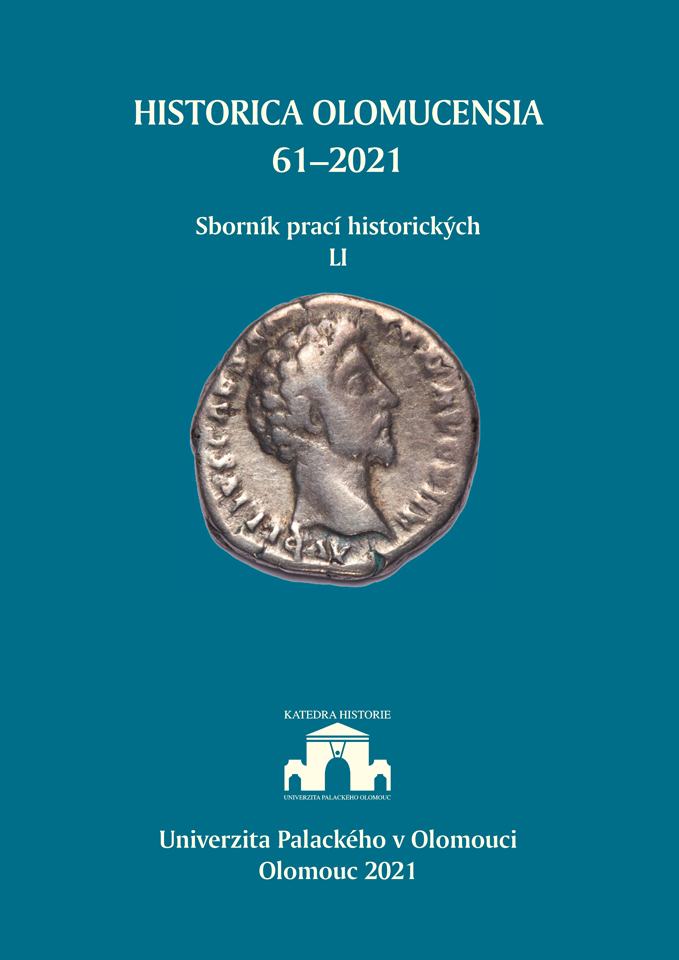
Keywords: Great Moravia; Nitra; Constantine (Cyril) and Methodius; Wiching; Diocese; Bishop; Archbishop; the Pope; Mission; Canon law; Liturgy; Old Slavonic;
The study focuses on the missionary activities of Constantine and Methodius in which Old Slavonic was used. The success of these activities raised interest in these missionaries even from the Papal Court. The missionaries were invited here by Pope Nicholas I and subsequent negotiations were led by his successor Adrian II, who approved their missionary activities in Old Slavonic and promoted Methodius to an Archbishop with an archdiocese that, in accordance with canon law (being the work of Christ, no diocese may cease to exist), was a continuation of the defunct ancient Pannonian diocese seated in Sirmium. In accordance with this law, this diocese was understood as a vacant one, and the Pope himself could appoint its bishop or archbishop. This led to opposition from the episcopate of East Francia, which considered this territory part of the Salzburg archdiocese based on secular law (a diocese ceases to exist after a certain period of inactivity, and the ruler of the territory in which the defunct diocese or archdiocese is located may decide about its new church organisation). The Franks also carried out attacks upon Methodius who was even imprisoned for two and a half years by the bishops of East Francia, and was only released following an intervention from the Pope. Methodius successfully defended his own position and eventually settled permanently in Great Moravia under Svatopluk’s rule. The precise location of his seat is, however, unknown. Following Methodius’s death in 885, the administration of his entire diocese was in all probability assumed by the Nitra bishop Wiching, an adversary of Old Slavonic liturgy. Wiching initiated persecution of supporters of the liturgy in Old Slavonic and forced them to leave the country. Eventually, while Wiching was already in the services of King (later Emperor) Arnulf, he left the archdiocese, which resulted in the collapse of the church organisation in Great Moravia. An attempt at restoring it was conducted by the new ruler of Great Moravia Svatopluk II (the son of Svatopluk I), who asked Pope John IX to settle the church organisation. At his behest, an archdiocese and three subordinate dioceses were established in the territory claimed by the Passau diocese. This resulted in an aggressive reaction directed against Great Moravia from the Bavarian clergy, expressed in its letter to Pope John IX, probably written in the year 900, when Central Europe was facing the imminent threat of a Magyar invasion. The result of the invasion was the fall of Great Moravia and its church organisation. A new church organisation in Central Europe began to develop under entirely different conditions that call for further investigation and analysis.
More...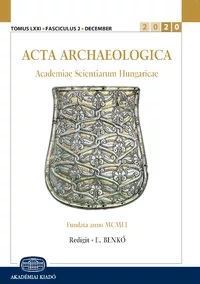
Keywords: samian ware; Lezoux; Martres-de-Veyre; Central Gaulish pottery; Antonine group; decorated ware; plain ware; percentage proportion; terra sigillata
In Pannonia from 122 sites 9867 Central Gaulish samian are recorded so far. The greatest number of this pottery has been published from the towns adjacent legionary fortress. Central Gaulish pottery is usually rare to find in cemeteries. The quantity of this ware everywhere greater than that of South Gaulish samian. 90.66% of the Central Gaulish terra sigillata are from Lezoux and 7.6% of this ware can be related to the workshops of Les Martres de Veyre. There may also have been a small number of Central Gaulish sigillata imported from Vichy, Terre Franche, Toulon sur Allier or Lubie. These samall production centres could be considered as possibilities. The Lezoux group is represented in Pannonia by 15 plain and 2 decorated forms. The decorated ware can be chronologically divided into three large groups. The earliest ware of Trajanic period is quite rare in Pannonia; they occur only in the western part of the province. The second chronological group, the Hadrianic–early Antonine one is in Pannonia a total of five times larger, than the Trajanic group. The total number of the third group, the Antonine samian is seven times larger, than the number of Hadrianic–early Antonine sigillata. Hadrian founded 8 to 9 municipiums in Pannonia. The new cities, mainly the two provinial seats Carnuntum and Aquincum had a large shipment of ware from Central Gaul. After the Marcomannic wars (166–180 AD) Rheinzabern took over a leading role on the provincial markets.
More...